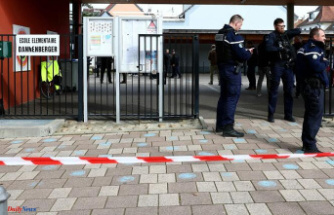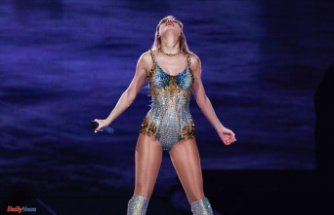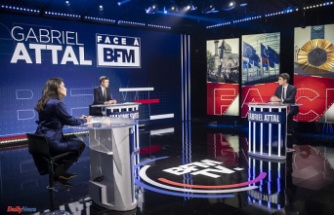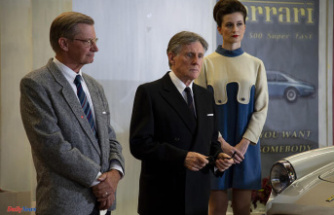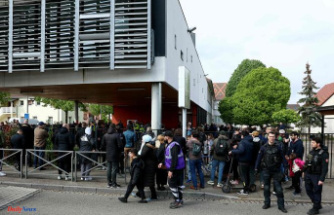The photographer of THE WORLD presented at the Casa Mediterranean is a work that flees from the clichés of the country.
The selfi of a young mother to a beach walled to prevent the harassment, a balloon of Batman flying over the cemetery on the Mount of Olives, or a musician behind the bars of your home with vignettes that embrace an orthodox jew and an arab. So are the contrasts in Israel, the country that has portrayed Manuel Lorenzo in their images for Home Mediterranean.
The exhibition of the photographer, who works for THE WORLD, is open in this cultural center within the program of meetings with Mediterranean countries. To the Middle East departed Lorenzo to portray the reality of a country, in that they avoid the "scrubbing politicians given the high load that this country has in internal and external affairs and that seemed to me perfect because I do not want to express in my photos a criticism of policy that misrepresents the message, or which results in a discussion foreign to my work as a professional". Accompanying him were Anabel Rosas and Rafael Arjones, those who have completed the video documentary, Israel, the land of hope.
Within your visual path, especially focused on the city of Tel Aviv, the Dead Sea and the capital of Jerusalem, the contrasts arise naturally "in terms of its day-to-day, its relationship with politics or religion." Two topics that, in principle, not intended to address "but it is impossible to do away with it in a country where religion has a direct influence with the policy and with Jerusalem as the cradle of the great religions of the world".
The large frames and the complexity of the details make the visual tour that offers in your photos. MANUEL LORENZOThe more explicit in this sense are the two mentioned at the beginning. Of these his favorite is Batman, "flies over two thousand years of history and of religion: a mosque, an orthodox christian church and a jewish cemetery".
This was her first visit to the country. And what lies are these contrasts with the title of the exhibition. If that is considered the economic capital, Tel Aviv is seen as "a modern city, less influenced by religion, almost western in daily life, you could be in any Mediterranean city", in Jerusalem the weight of the tradition of being considered a holy place for the three great monotheistic religions is palpable "in the architecture and even the type of tourism". "Conditions in daily life, everything," he added.
Tradition and ruptureLorenzo, born in Dolores, well-known to the iconographic tradition of the catholic church. Holy Week in particular has done great work with the eyes and reflecting the coexistence of the ancient and the modern. In this case he was facing one of the most visited and, therefore, portrayed to the world. "The best pictures religious are not in the exhibition because I did not want to hurt sensitivities. It was the daily life of the jewish and muslim religions. But I wanted a story too white".
The photos chosen are perfectly representative of the work that deploys usually Lorenzo. Away from portraits closed, its characters are framed in the environments. "I like the big frames with many elements to have a visual tour to give time to interpretation", he notes, "and playing with contrasts and visual content".
And he takes advantage of the large format in which are exposed the images. In the selected Tel Aviv light is very mediterranean, he insists, with a hardness marked by the summer as it was in August when he made the trip. "At the time of placing the people in the frames that I think, in this city, you have more opportunity to contrast modernity with tradition", she explains.
More than in Jerusalem, where "everything is more dark and old, which is what attracts". In fact, he explains that the chosen, mostly, for this seem to be almost nocturnal because of the intricate maze that is their urban plot. "At five in the afternoon because no light comes through these streets," he says.
One of the things that most surprised him is that "socially, there was no kind of conflict, obviously it is with the neighbours by the territory". A clear example of this sees him at Jerusalem, "where the three religions coexist perfectly: each one in his neighborhood, crossing each other and without problems". And although he admits that the army is very present in the daily life, "I didn't want the story derived in that because you could misunderstand".
After this first solo exhibition, the photographer moves that already with another project on our hands. "It's an emotional journey to my childhood, to my past in the Vega Baja. An area in the seventies and eighties, I lived with an idiosyncrasy very particular, more isolated, if possible, than the rest of the province," he advances.
CONFLICTONecesidad"The people are very picky and gives me the feeling that it is searching for any sign of conflict for liarla. We are very upset. You have need of conflict," he reasons.
social Networks"These are the speaker that she did not have before the bar. This derives in which any buscaconflictos have the speaker perfect for the launch of a message of disturbance. I deny that those characters influence my exposure," he concludes.
According to the criteria of
Learn more Date Of Update: 05 November 2018, 08:03

